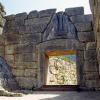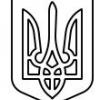Кратък преглед на тезите за етонима, новите тези
-
Последна активност
-
- 26 мнения
- 346 прегледa
-
Генетиката в помощ на историята: сарматският произход на българи и славяни 1 2 3 4 99
От Южняк, in Средновековна история
- 2474 мнения
- 284133 прегледa
-
- 2861 мнения
- 189960 прегледa
-
- 223 мнения
- 4931 прегледa
-
- 3 мнения
- 13 прегледa
-
-
Последно разглеждащи 0 Потребители
- No registered users viewing this page.



Препръчано мнение
Напиши мнение
Може да публикувате сега и да се регистрирате по-късно. Ако вече имате акаунт, влезте от ТУК , за да публикувате.